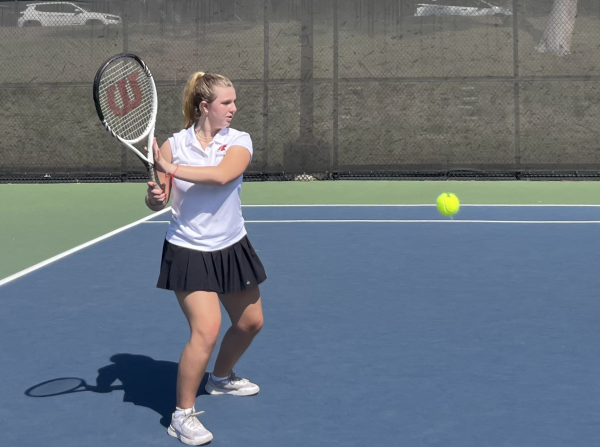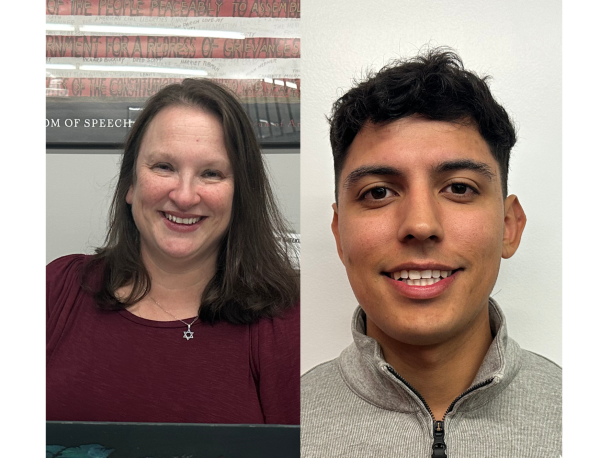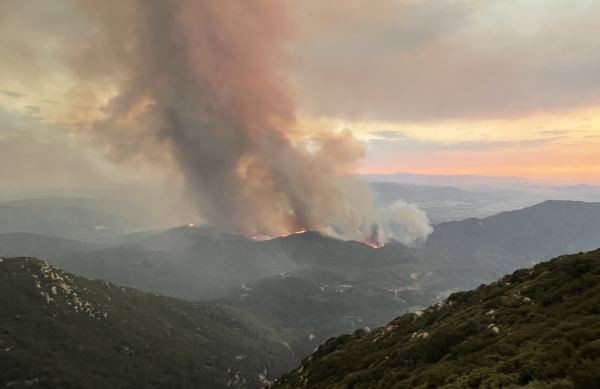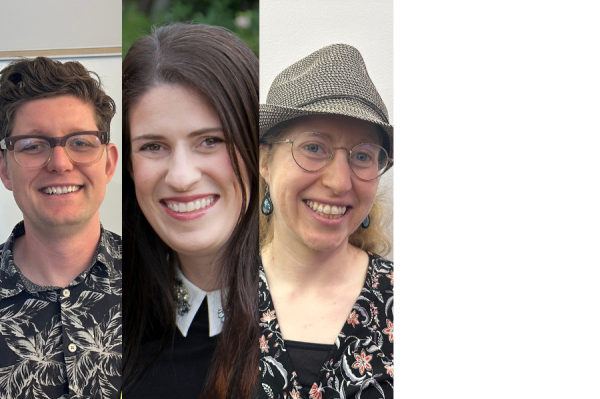Lonna Kin, my grandmother and me
May 16, 2014
When Rabbi Segal sent out an email to the community giving us the opportunity to “stand up and have our voices heard” on behalf of Lonna Kin, I was moved by her story. Lonna has been an agunah for over 9 years. An agunah is a female Jew who is no longer with her husband but cannot remarry because he has not given her a get – a Jewish divorce document that would officially end their marriage — either because something tragic happened to him and he is missing, or because he refuses to release her for personal or financial reasons.
In some situations, Jewish law permits men to marry a new wife while still being religiously married to the old one. Lonna’s husband, Yisrael Meir Kin, got special permission to remarry while he is still married to Lonna. This is repelling considering that they do have a civil divorce, and that Lonna is now raising five kids as a single mother and cannot remarry.
I felt it unjust for any woman to go through this, and I felt it was my duty to protest at Meir’s new wedding alongside other members of my school. The ceremony was held In Las Vegas on Thursday, March 20, and the protest was planned for Las Vegas at that time.
Before I got home to discuss this issue with my mom, she texted me, saying: “I would like you to go to Vegas with the school on Thursday and with Laly (my sister) too.” I didn’t realize that this was something she would be interested in. I also had doubted that she was going to let me drive to Las Vegas and back on a school night.
However, when I got home, my mother told me that this was very important to her because her mom was an agunah for 25 years. My grandma would tell me many stories about my mom’s childhood, but whenever I brought up my grandfather she was reluctant to speak, and it was then that I discovered why.
My grandmother left her husband and was civilly divorced in 1978, but did not receive her get until 2003, after a family friend talked to a rabbi who played a big role in the local Beit Din. My grandmother had asked many times for her get but said it wasn’t crucial for her because she worked long hours and wasn’t interested in getting remarried. Her husband, on the other hand, was able to move to a different city, marry another woman and have four kids with her.
Looking at my grandmother and Lonna Kin, I find this law harsh and antiquated. I also find it hard to comprehend how Lonna remains an observant Jew who still covers her hair and will not date anyone because she thinks it is “unfair” to the person — since marrying her would mean committing adultery under Jewish law. This law forces women to make difficult religious choices. They can either struggle alone or be with another man and sin in the eyes of the Bible. Or they could become so frustrated that they could decide to leave observance, or even Judaism.

It is extremely hard, if not impossible, for me to place myself in my grandmother’s shoes. I truly admire her so much more knowing she was able to hold on to her Judaism and teach her children to love our religion despite the harsh confines it put on her. She taught this love to my mother, which in turn encouraged her to do the same for me and my siblings.
My grandmother has awe-inspiring devotion to Judaism. She sent her kids to Jewish school, covered her hair, and taught her children the value of keeping Shabbat, even though the restrictions put on her by Judaism meant she had to do this on her own. If one is looking for a religion that is convenient, one should never turn to Judaism. If it is valor and meaning however that you need in your life, then Judaism is the right path. Although this trial must have been very difficult for my grandmother, she made it a point to stay true to God.
Though it appalled me when I first heard about it, the get was originally used to protect women. It was used to dissuade husbands from leaving their wives with nothing — which was frequently done — because the get required payment according to the terms of the marriage contract. Unfortunately it has turned into something that is often abused by divorced husbands to prevent their ex-wives from getting remarried. Lonna says Mr. Kin is seeking full child custody and also some money.
As Jews we believe that halacha must react to the changes in society, whether it be electricity on Shabbat or men using the get system to hurt women. This is something that is a plague from the past and is harmful to so many women today. Now that this law does little more than hurt women, it can be viewed as one of the biggest injustices in Orthodox Judaism, and one that needs to be fixed immediately.
In the end, I was unable to go to the protest in Las Vegas because I would have missed too much class. I strongly admire those who did go, who drove seven hours each way in traffic in order to prove something. It was very controversial because some parents thought it wasn’t proper to ruin a wedding. But I believe that it was the right thing to do.
Even if it didn’t have immediate effects, it must have been very shocking for the woman marrying him to see. And it must have meant a lot to Lonna to see that people understand what she is going through and care. Seeing pictures of the Shalhevet kids at the demonstration in the New York Times and Jewish Journal made me so proud to attend a school where we are so open-minded and have possibilities like this to make a difference.
I wish I had been able to attend the protest and I fervently hope that I will have the opportunity to do something like this in my lifetime. But even more, I hope that one day in the future I won’t have to take a stand on this issue, because our rabbis will have found a way to make the get system protect women, as it originally was intended to do. Not only would that protect women like Lonna and my grandmother, but Jewish law would then be as beautiful as the religion my grandmother loved so much.
This story won a National Opinion Columns Award in the 2015 Quill & Scroll International Writing and Photo Competition, judged by the American Society of News Editors.












